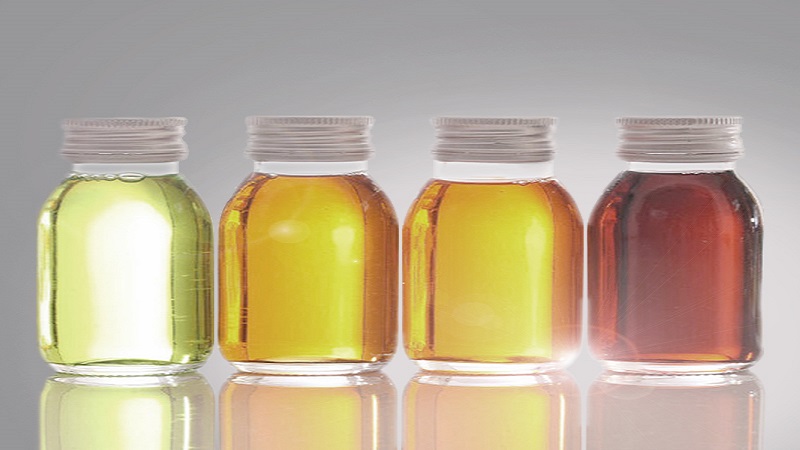Definition Of Base Oil
Base oils are refined base stocks recommended for use in the manufacture of automotive & industrial lubricants, oil & greases, rubber products, white & paraffin oil and so on. Base oils are refined from crudes with characteristics making them the most desirable for our customers. Base oils are more polar in nature than Paraffinic oils and hence they have good cooling properties and excellent low-temperature properties. They also have better solubility and ability to form stable emulsions. Huei Jie Oil offers base oils in various viscosity range including SN100, SN150, SN350, SN300, SN500, SN600, SN650, SN900.

To better understand the difference between oils, we should first understand what their commonalities are. Paraffinic, Naphthenic, Hydrotreated and Synthetic Oils are used as a base oil in the formulation of automotive fluids.
Base Oils typically make up 70% to 99% of a lubricant’s formulation and are refined by various methods, mostly from crude oil. The type, source and refining method that are used determine the properties of the oil.
The viscosity-temperature properties of an automotive transmission fluid (ATF) are dependent on the choice of the particular base oil and on the viscosity index improvers used. These features are important because, with increasing temperatures, the viscosity index improvers slow down the change of viscosity. In other words, they keep the fluid stable.
Different families of Base Oils
Naphthenic oils derive from naphthenic crude which is very inexpensive and readily available. These oils yield a medium viscosity index and low viscosity index base oils. Generally, these oils have little wax and naturally low pour points. Unfortunately, these oils have poor thermal and oxidative stability coupled with their modes viscosity properties. This means that they are not suitable for the requirements of today’s high-performance transmission fluids. In summary, Naphthemic oils have:
- poor to fair oxidation stability
- poor to fair thermal stability
- good solvency
- low pour point
Paraffinic oils are prepared by solvent separation techniques from a paraffinic crude source. This gives a good yield of high viscosity index stocks, and they contain a lot of wax. Paraffinic oils have a high thermal and oxidation stability and also provide good high-temperature viscosity characteristics. Low-temperature removal of the wax (dewaxing) of these oils is also performed to produce the low-temperature requirements. In summary, Paraffinic oils have:
- good to very good oxidation stability
- increased thermal stability.
Hydrotreated oils can be made from almost any crude oil, using an alternative refining process. They substitute deep hydrogen treatment for solvent extraction. Through this process, there is an increase in the yield of high viscosity index components (rather than the unwanted low viscosity index components). This process also reconstructs cracked waxes into branched chain paraffin which offers excellent low-temperature properties.
The benefits of hydrotreated base oils are key in formulating today’s quality automotive transmission fluids. The use of hydrotreated base oils has led to the proliferation of “synthetic” transmission fluids that have been introduced to the market in the past few years. The higher cost of these products reflects the higher cost to produce base oils.
There is confusion around the identity of a synthetic oil because of the absence of an exact definition of the word “synthetic”. In Europe and North America, hydroisomerized (i.e. hydrotreated) base oils are being sold and marketed as “synthetic”. The most widely used “synthetic” base oils are the polyalpholefins (PAO’s). However, other common synthetic base oils used are diesters, polyol esters and polyalkylene glycols (PAGs). In summary, PAO’s:
- are the most versatile of all synthetics
- are similar to branched paraffin
- do not contain any sulfur, phosphorus, wax or metals
- have high oxidative and thermal stability
- have excellent low temperature fluidity.
CCC Chemicals handles the PAO’s manufactured by ExxonMobil Chemical. A decade ago, barely 8 per cent of PAO supply was classified as high-viscosity fluids, in grades of 40 and 100 Centistokes (cSt). The market was dominated by fluids weighting 4 to 10 cSt. ExxonMobil recently announced SpectraSyn Elite 300, a 300 cSt material with a viscosity index of 241. This material, manufactured in Baytown Texas, was already producing 65 to 150 cSt PAO. The new grade has more than weight going for it. It has an exceptional film thickness, shear stability and temperature properties that are ideal for making industrial gear oils, engine oils, greases, and automotive driveline lubricants. These properties allow blenders to make lighter-viscosity finished lubricants which save energy without sacrificing wear control.
In summary, lubricant base oils are categorized by their physical characteristics and/or refining process, as follows:
Group 1: Base oils have a sulfur % Wt. content of >0.03 and a viscosity index of 80-120.
Group 2: Base oils have a sulfur % Wt. content of < 0.03 and a viscosity index of 80-120.
Group 3: Base oils have a sulfur % wt. content of < 0.03 and a viscosity index of > 120.
Group 4: Base oils are 100% Polyalphaolefin (PAO)
Group 5 are all base oils that are not included in Groups 1 -5 (naphthenics, esters and polyglycols)
-
Base Oil SN100
-
Base Oil SN150
-
Base Oil SN300
-
Base Oil SN350
-
Base Oil SN500
-
Base Oil SN600
-
Base Oil SN650








